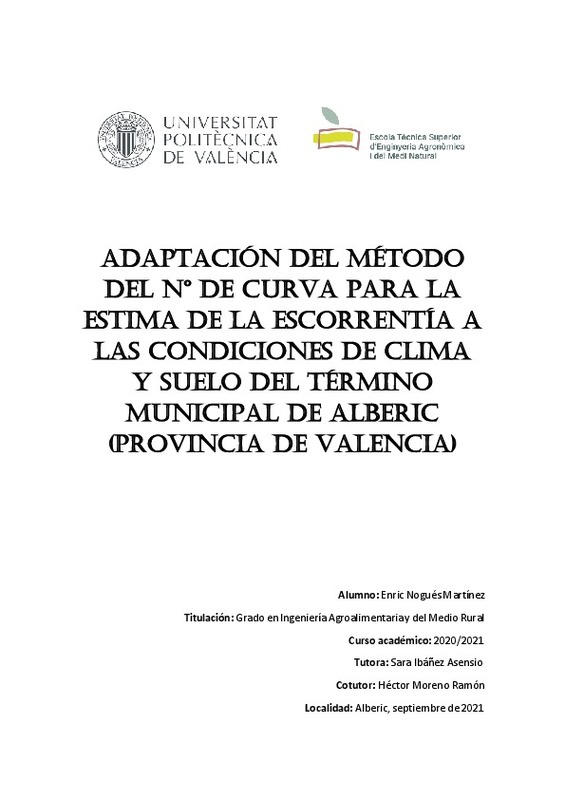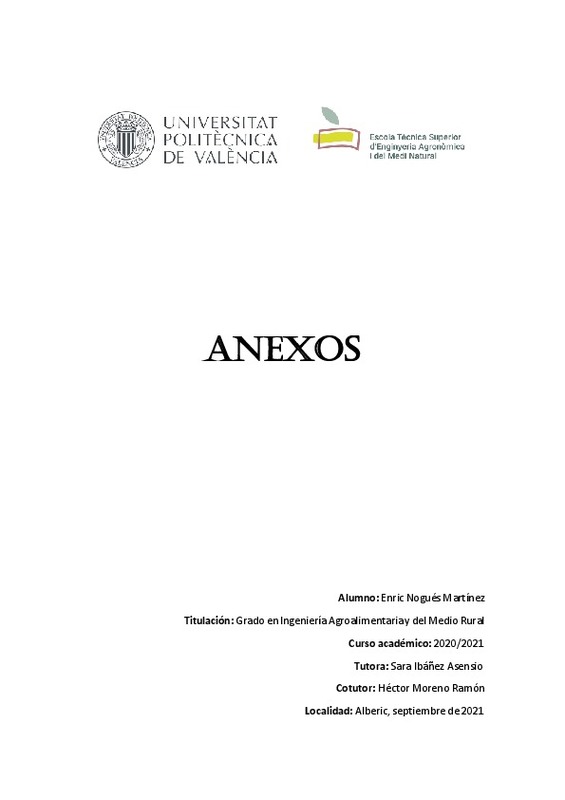|
Resumen:
|
[ES] El método del número de curva permite estimar la escorrentía que se generará en una determinada zona a consecuencia de una precipitación pluvial a partir de datos empíricos. Para ello utiliza datos climáticos, edáficos ...[+]
[ES] El método del número de curva permite estimar la escorrentía que se generará en una determinada zona a consecuencia de una precipitación pluvial a partir de datos empíricos. Para ello utiliza datos climáticos, edáficos y de uso y manejo del suelo. Si la cantidad de lluvia prevista es obtenida mediante tablas o fórmulas de eventos torrenciales propios de la zona de estudio, entonces la estima de la escorrentía proporcionará valores máximos susceptibles de ser usados para cálculos de infraestructuras de riego o conservación de suelos en los rangos temporales establecidos por el periodo de retorno utilizado (de entre 10 y 50 años). Los factores edáficos (laboreo, condiciones hidrológicas y tipo de permeabilidad del suelo) y de uso de la tierra de la zona de estudio condicionan el valor del llamado ¿número de curva¿ característico del lugar y, de no medirse en campo, se obtienen de tablas de valores empíricos obtenidos en condiciones ambientales estadounidenses puesto que este método ha sido desarrollado por el Servicio de Conservación de Suelos (SCS) de Estados Unidos. Por lo tanto, de no estar adaptadas a los suelos de nuestro entorno de trabajo, su uso lleva asociada cierto nivel de incertidumbre. El objetivo de este trabajo es obtener la tabla que permita obtener la escorrentía en las zonas más representativas del término municipal de Alberic mediante el método del nº de curva para que se pueda obtener la escorrentía de esta zona sin la utilización de las tablas estadounidenses, que no se ajustan totalmente a las condiciones edáficas locales. Para ello se procederá a la caracterización de los suelos de la zona mediante la realización de muestreos y ensayos de campo, y diversas analíticas de laboratorio (textura, estructura, materia orgánica principalmente) aplicando las normas UNE correspondientes. La selección de los puntos de muestreo se realizará en atención a los factores formadores del suelo y al uso y manejo de los cultivos específicos de la zona de estudio.
[-]
[EN] The curve number method is an empirical method that allows estimating the runoff that will be generated in a given area as result of rainfall through the assignment of a hydrological number or curve number. For this ...[+]
[EN] The curve number method is an empirical method that allows estimating the runoff that will be generated in a given area as result of rainfall through the assignment of a hydrological number or curve number. For this purpose, it uses climatic, edaphic and land use data. If the expected amount of rainfall is obtained from tables or formulas of torrential events specific to the study area, then the runoff estimate will provide maximum values that can be used for irrigation infrastructure or soil conservation calculations in the temporal ranges established by the return period used (between 10 and 50 years). The edaphic factors (tillage, hydrologic conditions and type of soil permeability) and land use condition the value of the so-called "curve number" characteristic of the site. Theses, if not it measured in the field, are obtained from tables of empirical values obtained under US environmental conditions since this method has been developed by the Soil Conservation Service (SCS) of the United States. Therefore, since they are not adapted to the soils of our working environment, their use is associated with a certain level of uncertainty. The objective of this work is to obtain the table of curve numbers that allows obtaining the runoff in the most representative areas of the municipality of Alberic using the curve number method so that the runoff of this area can be obtained without the use of the American tables, which are not totally adjusted to the local edaphic conditions. For this purpose, the soils of the area will be characterized by means of sampling and field tests, and various laboratory analyses (texture, structure, organic matter mainly) applying the corresponding UNE standards. The selection of the sampling points will be made according to the soil-forming factors and the use and management of the specific crops in the study area.
[-]
|








